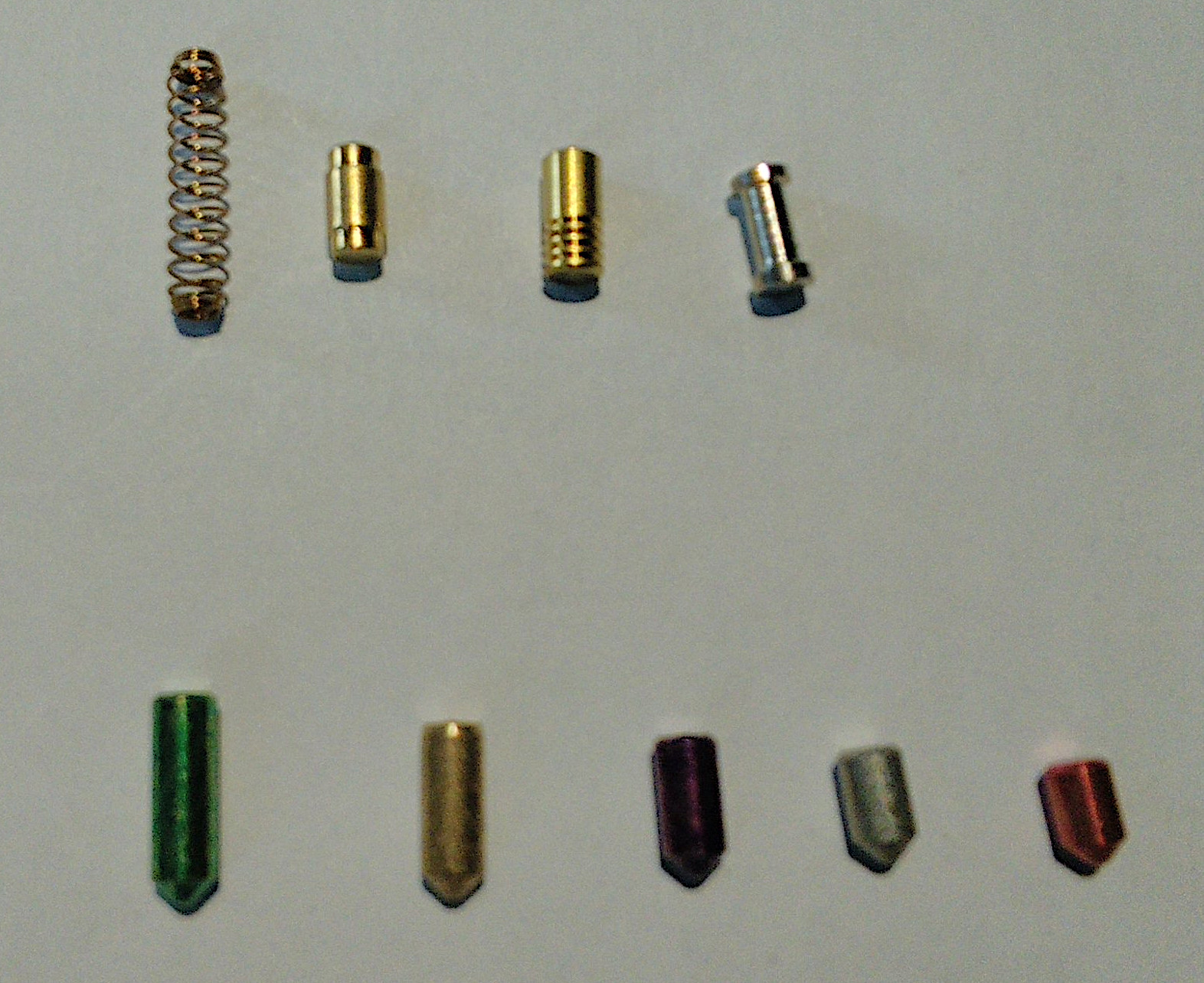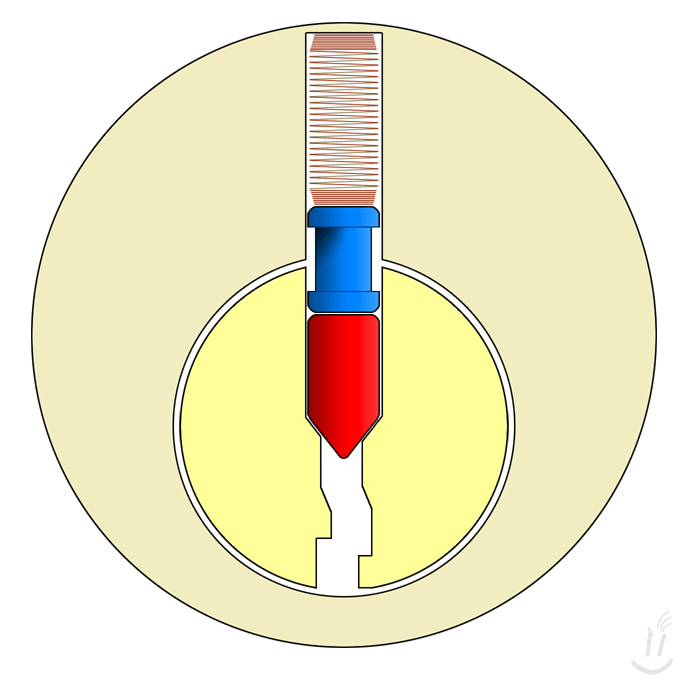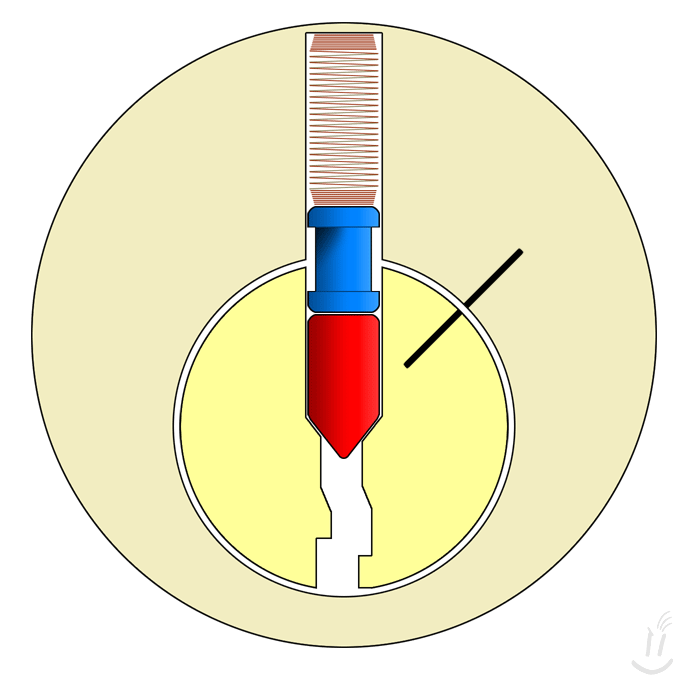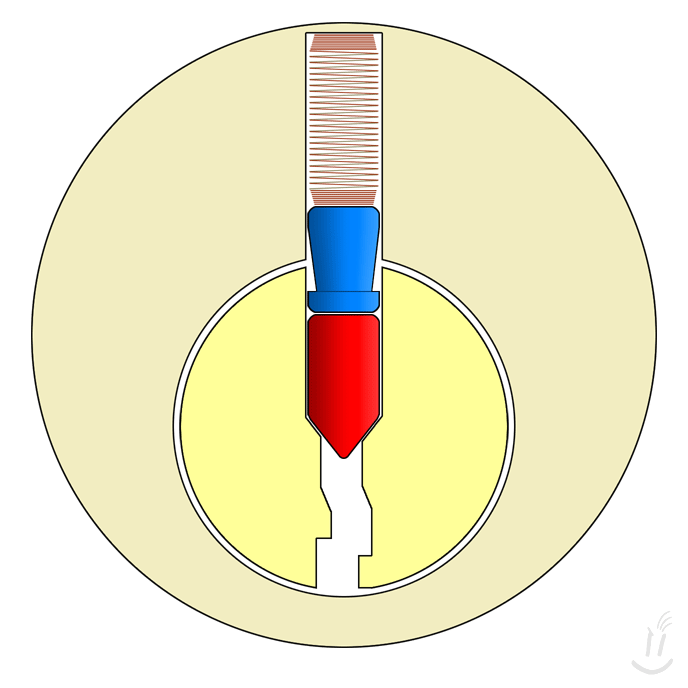This time, let's move on to a discussion about security pins in pin tumbler locks, and why it matters.
If you haven't done so, you really should read Lockpicking - Basic pin tumbler locks first, before reading this piece.
But, if you're done reading the introduction to pin tumbler locks, picks and tension tools, you're all set...
So, let's have a look at the different pins we can meet in a lock, and why design matters.
A quick collection of pins.

From the top left to right.
A standard spring, a couple of serrated pins, and far right is a spool pin.
The bottom row, is a collection of key pins of different sizes. This is what gives us the key code, matching individual locks.
Let's look at how these pins work against us, how to detect them, and how to beat them.
Remember that, when we're picking, we apply tension and torque to the cylinder. So far, we've encountered normal pins, causing the to bind against the chamber walls, and that's not a problem, they slide right up through the chamber, and up above the shear line, and get stuck. That's how we "set" a pin, before moving on to the next. But, what would happen if someone cut a small grove into the side of the driver pin ? It would get stuck, stopping us from lifting the pin, and locking the cylinder. So, let's see it up close.

This is a spool being caught, due to us providing tension to the core, and binding it in the cylinder. What do we do ?. Well, it will feel like the lock is doing a small counter rotation, that's how we detect a spool.
When we feel it, we can ease off on the tension, just slightly, until we can push the spool home, above the shear line, and move on to the next pin.

Some simply draw a small mark on the training lock, like the graphic shows, others extend their tension tool, and make a scale for practicing detecting and picking spools.
Bosnian Bill, has a very nice video of this method, and i really recommend watching it on his Youtube channel
But, can we detect it by hand ?. Yep, you bet. Because of it being wide at the top and botton, you'll feel the core rotating a lot more than it would if it were a normal pin. Second, if we apply more lift to the pin, it will push back on the core, causing a counter rotation as we apply lift. And, if it's in false set, we can't rotate the cylinder. What to do ?. Simply just ease up on the tension ever so slightly, apply lift, and send the pin to it's resting place, above the shear line.
And yes, be prepared for pins to drop down, if you've set them. This is normal, and to be expected, so keep calm, and go over the pin stack once more, sending them home one by one. It IS possible, but a pain in the a!!%# to deal with. But you'll get there with time, and practice.
So, are there other designs ?
A lot actually. One of the others you might encounter, is the mushroom.

It behaves and feels a lot like the spool pin, and you will feel the core of the lock, rotating in an unusual manner, warning you of a security pin. You will also feel it being caught, so you cant lift it, it will fight you, until you ease off on the tension, and send it home, above the shear line, before moving on to the next pin.
The next, is a serrated pin. An example of this, is the second pin from the right, in the top row, on the pin collection photo.
Notice this pin is straight for about half the pin, then there's series of cuts in it, all the way to the end.
What does it do. We'll by design, it also binds when you try to lift it. But, with a lot of practice, you'll learn to feel the serrations rubbing against the cylinder, and learn to lift it, until it finds it's place, above the shear line.
So, there you have it. A shot piece about security pins, and something about detecting them, and picking them, It can be done with practice, so getting a good training lock, for trying out different types of pins and pin combinations is really worth the investment, if you're serious about wanting to learn this stuff.
But, as with anything else, be prepared for investing some serious time in it. The basics takes ten minutes, getting to be good at it, takes a lot of time. It's like playing Go... :)
Some locks should be unpickable. Notice the should here.
Some of the best pickers in the world have beaten so called high security locks, with security pins, side pins and the works. It's just a matter of skill..and patience :)
Again, some credits :)
A thank you goes out to Deviant Ollam for the graphic illustrations of locks, and for releasing them under The Creative Commons License, it's much appreciated.
Remember, "The Rules Of Two", Don't pick something you don't own yourself, and don't pick anything you depend on for everyday use.
Come to think of it, let's extend that to "The Rules Of Three", Stay Away From Thy Neighbours Stuff" :)
Much happy picking :)


